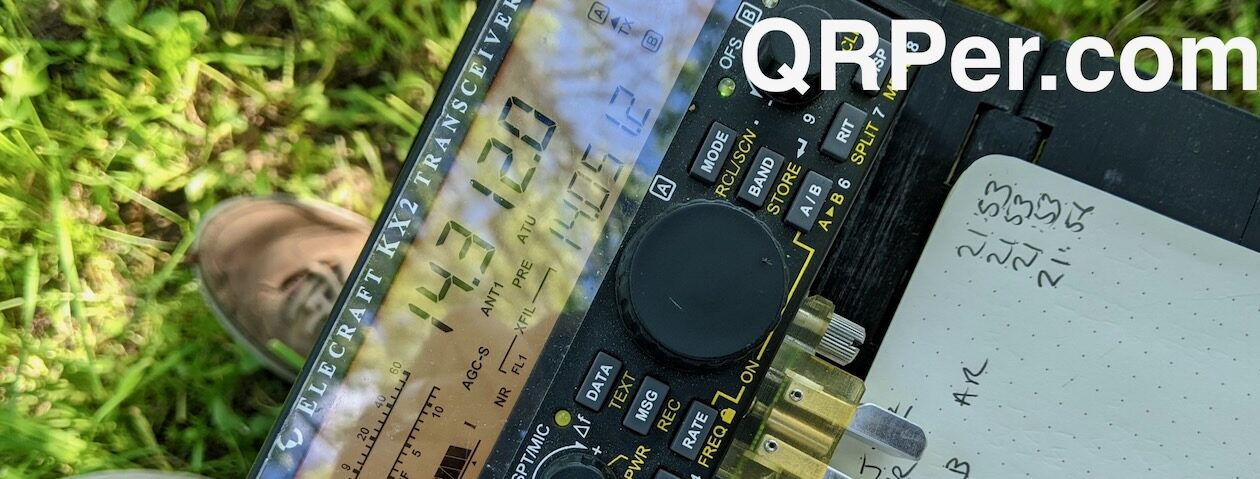Many thanks to Becky (N4BKY) and Mike (N4FFF) who share the following announcement:
A New Way to Connect On the Air with CW
by Mike (N4FFF) and Becky (N4BKY)
Hi everyone! Mike and Becky here, (aka the HamRadioDuo) and we are excited to share a brand new tool to make it easy to find people for CW QSOs. If you love Morse code and ham radio as much as we do, you know how thrilling it is to sit down at your rig, ready for a QSO, only to find yourself calling CQ into the void. Wouldn’t it be great if there were an easier way to tell the world that you’re here and ready OR or to look at who else is out there looking for the same type of QSO as you.
Meet QSOFinder.com, a simple yet powerful tool designed to help CW operators connect in real time. Whether you’re brand new to CW and just looking for a quick exchange or an experienced operator who loves a long ragchew, QSOFinder makes it easy to find like-minded hams on the air.
Our Inspiration
If you’ve ever done a POTA activation, you know how helpful the POTA spotting page is – it’s like shouting from a bullhorn to let others know you’re on the air. We wanted something similar but tailored for everyday QSOs. That’s how and why QSOFinder was created! Learning Morse Code is enough of a challenge, so we wanted to try to make getting on the air and having that first or hundredth QSO a little easier.
How It Works
The idea is simple:
- Post Yourself as Available – Enter your callsign, frequency, preferred CW speed, and what kind of QSO you’re looking for. Maybe you’re in the mood for a quick and casual exchange, or perhaps you’re hoping for an in-depth conversation – you get to decide!

Click to enlarge image. - Find Other Operators – Browse active listings from fellow hams and tune in to their frequencies to answer their CQ and start a QSO. They may already be connected with someone, but what a great way to find a conversation and work on your decoding skills.
- Leave Comments – If you try to reach someone and don’t hear them, you can leave a comment on their listing to let them know you tried. It’s a great way to keep the community engaged and informed.

- Get Notifications – Want to know when a new operator posts? Enable notifications to stay updated without having to constantly check the site if your browser is open to QSOFinder.com.
- Filter by Band – If you’re working with a monoband antenna or just prefer a certain band, you can filter posts to match your setup.
Built by CW Hams, for CW Hams
 We’ve been testing QSOFinder with our friends, and it’s already making a difference. It’s been a fantastic way to get people on the air, and we hope it inspires more operators to jump in and enjoy the magic of CW.
We’ve been testing QSOFinder with our friends, and it’s already making a difference. It’s been a fantastic way to get people on the air, and we hope it inspires more operators to jump in and enjoy the magic of CW.
This is the first tool we’ve released, but if you like it and want to see more, let us know! We’d love your feedback – whether you have suggestions, run into any issues, or just want to tell us it’s working great, there’s a feedback feature built in. You can also drop us a comment on our YouTube video.
HamRadioDuo – QSOFinder YouTube Intro Video
Our main goal with HamRadioDuo has always been to inspire and encourage others to get on the air, have fun, and build their skills. QSOFinder is just another way we’re trying to make that happen.
Give it a try at QSOFinder.com, and let us know what you think! The more people posting to make themselves available and the more operators answering those already on the site, the more fun this will be.
Happy QSOs!!!
73 Mike N4FFF es Becky N4BKY
P.S. If you haven’t already, subscribe to our channel – it’s a free and easy way to support us, and we’d love to have you along for the adventure!






















































